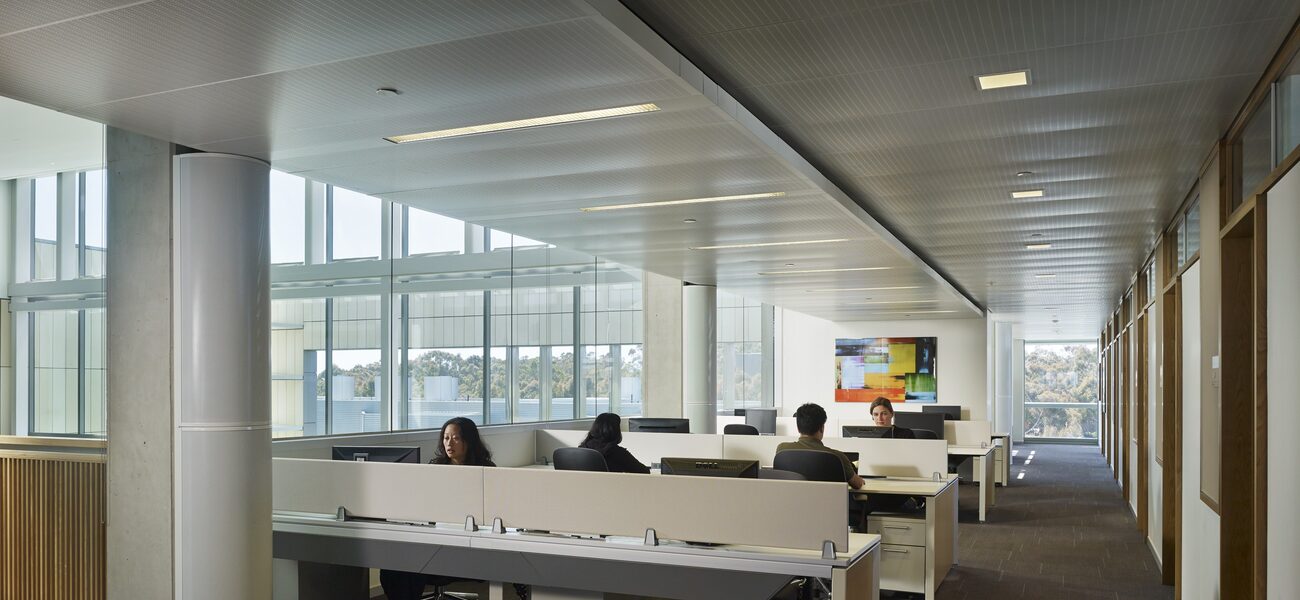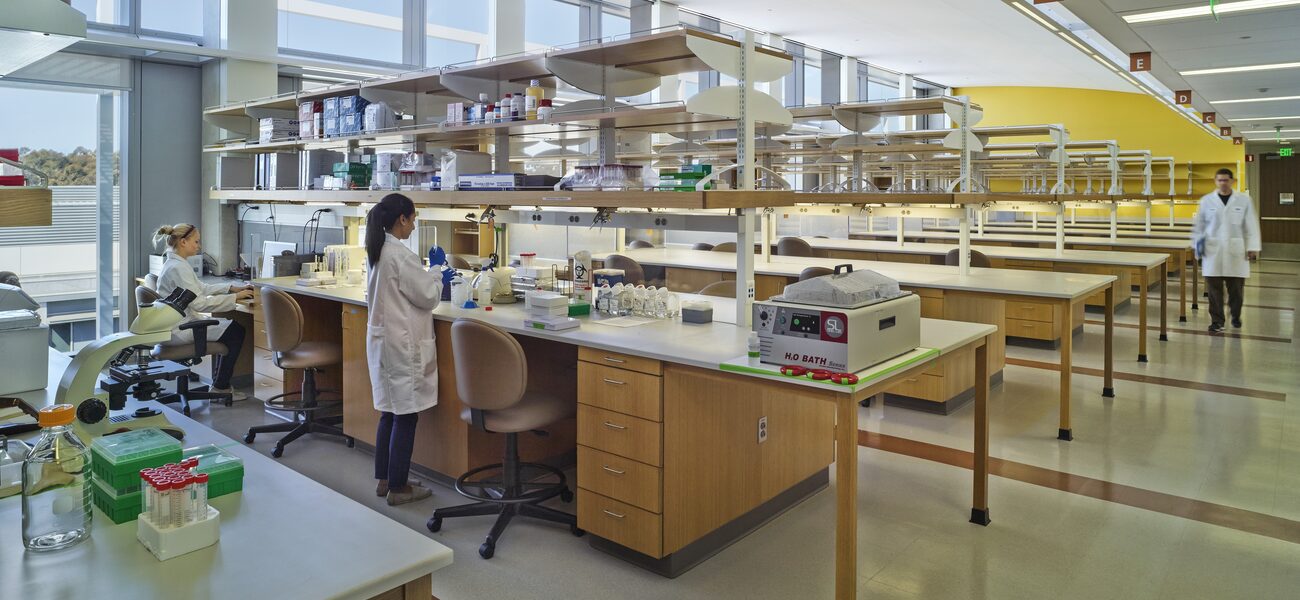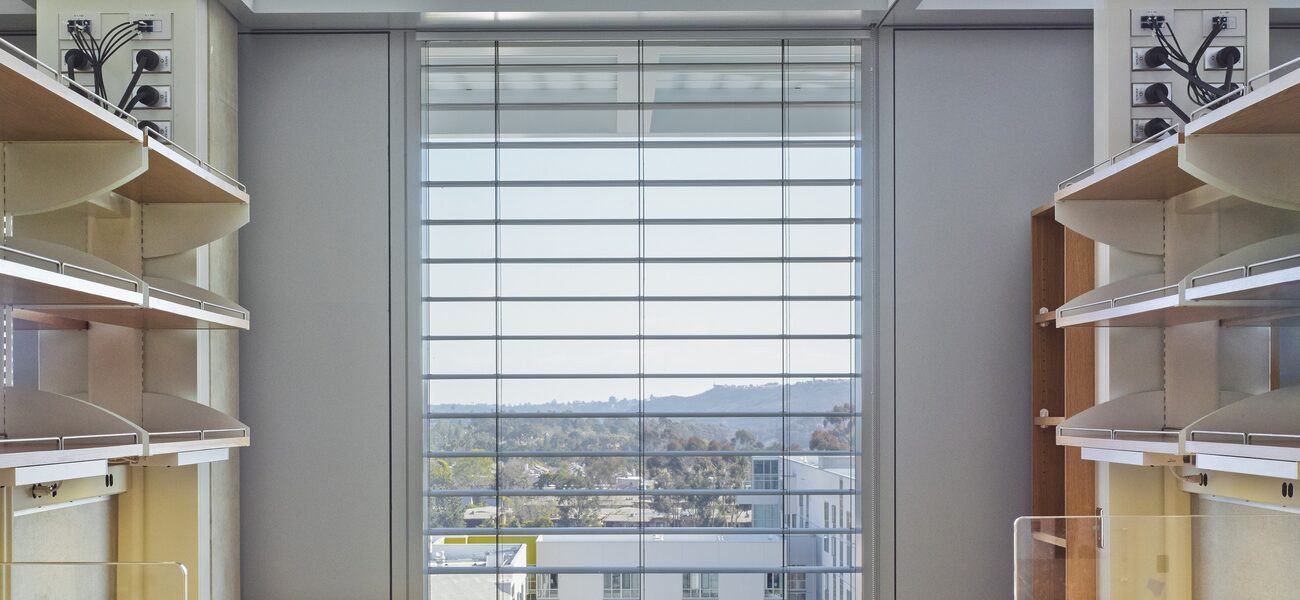The seven-story Health Sciences Biomedical Research Facility on the UCSD Health Sciences campus includes wet labs, open lab space, lab support, and administrative support space on five stories above ground; with a vivarium; core lab space; support; and mechanical, electrical, and plumbing systems in the basement. Seven stories of attached administrative office space, interaction spaces and conference rooms are linked by a cast-in-place concrete staircase that climbs seven stories up through the open lobby, and one story down.
The building houses numerous academic research departments, including bioinformatics, genomic medicine, gastrointestinal medicine, childhood diseases, pathology, immunology, inflammation, psychiatry, cardiology, neurosciences, infectious diseases, and glycobiology.
An open, light-filled interaction space is accessed vertically by both a sculptural monumental stair and a transparent glass elevator. It is flanked on every level by conference rooms and reconfigurable interaction spaces. Multiple scales of gathering areas include benches at circulation nodes, perimeter break-out lounges with flat screens and whiteboards, and conference rooms. Two outdoor terraces, utilized for dining and social gatherings, offer views overlooking the academic lawn and the campus.
The facility is tracking LEED platinum certification. Sustainable features include:
- Water Re-Use: Non-potable water is collected from numerous sources within the building and from an adjacent lab building, filtered, and stored on site.
- Water-Use Reduction: All plumbing is low-flow and toilets/urinals are dual-plumbed to utilize recycled water, cutting potable water use by more than 50 percent.
- Landscape Irrigation: Non-potable water provides 100 percent of landscape irrigation.
- On-Site Stormwater Treatment: Bioswales capture and filter stormwater runoff.
- External Shading: A dynamic computer-controlled exterior solar shading system tracks the sun throughout the year, automatically deploying and adjusting the horizontal blade angles to prevent sun rays from directly striking the exterior glazing within the vision zone.
- Integrated Daylight: A curved ceiling in laboratories optimizes daylight distribution; electric lights respond automatically to daylight levels.
- Operable Windows: All private and shared office spaces incorporate operable windows.
- Continued Research: Specialized systems have been included for energy submetering, monitoring and optimizing ongoing operations, and building design research.
- Optimized Ventilation: Fume hoods and separated procedure rooms in labs enhance researcher safety while reducing energy. All concentrated occupancy spaces have CO2 sensors, and displacement ventilation in offices supplies higher-quality, cleaner air with less energy.
- Optimized Exhaust: To save energy, laboratory exhaust fans have been designed to reduce speed in calm wind conditions.
- Sustainable building materials: Materials have been selected for low-VOC emissions, recycled content, and local sourcing; most of the project’s wood is FSC certified.
| Organization | Project Role |
|---|---|
|
ZGF Architects LLP
|
Architect
|
|
McCarthy Building Companies Inc.
|
Builder
|
|
Stantec
|
Mechanical, Plumbing, and Fire Protection
|
|
KPFF Consulting Engineers
|
Structural Engineer
|
|
Integrated Engineering Consultants
|
Electrical Engineer
|
|
Burkett & Wong
|
Civil Engineer
|
|
Research Facilities Design (RFD)
|
Laboratory Planner
|
|
Spurlock Landscape Architects
|
Landscape Architect
|


